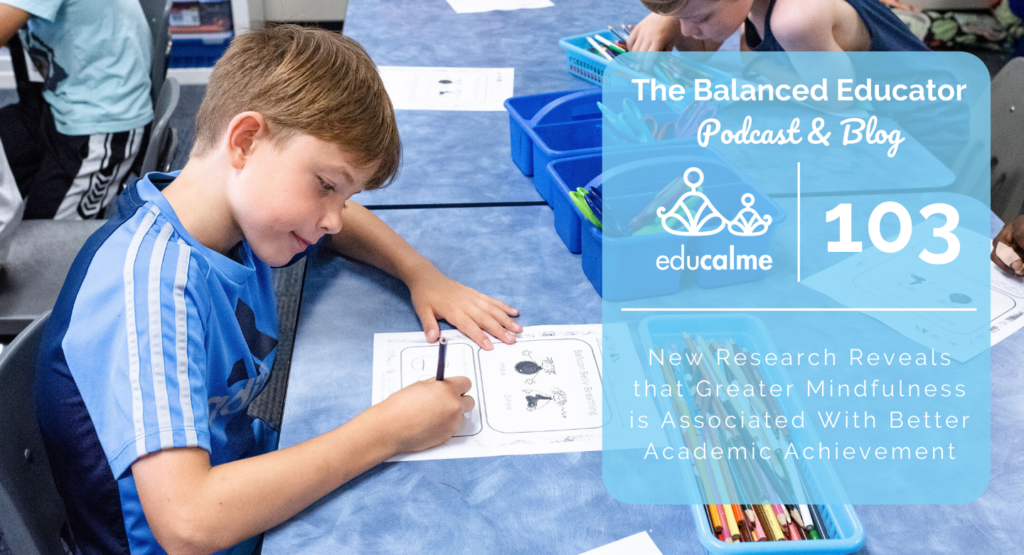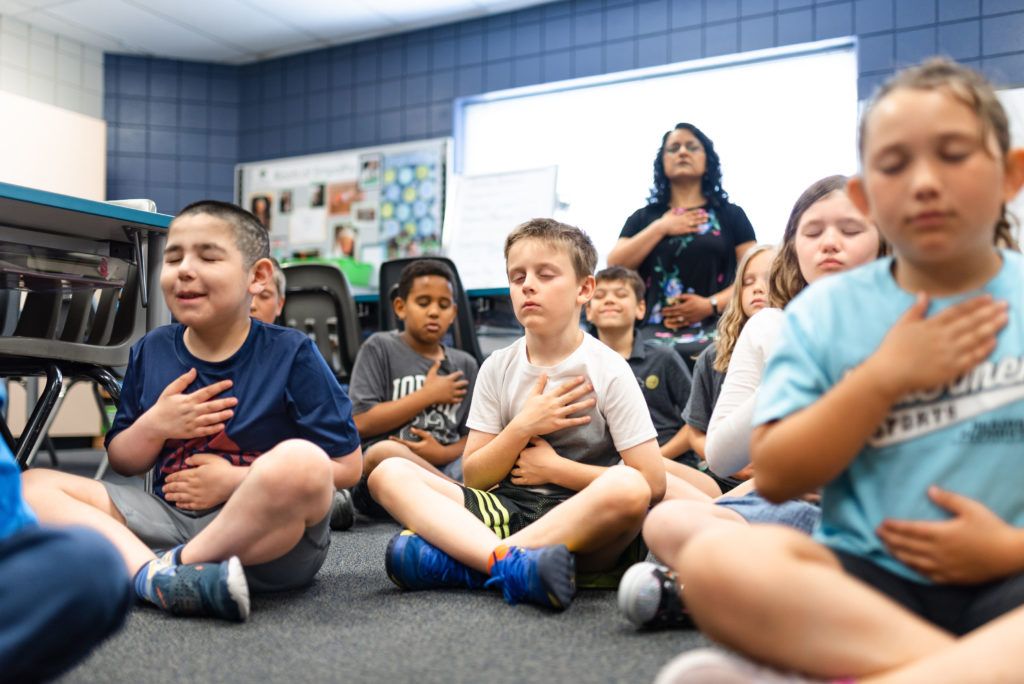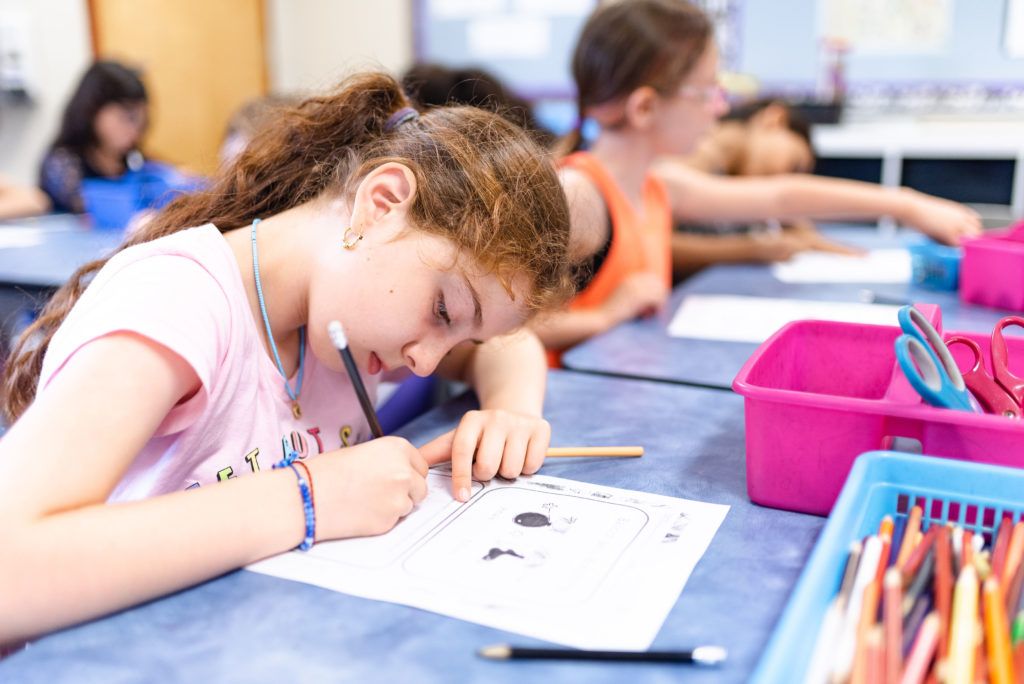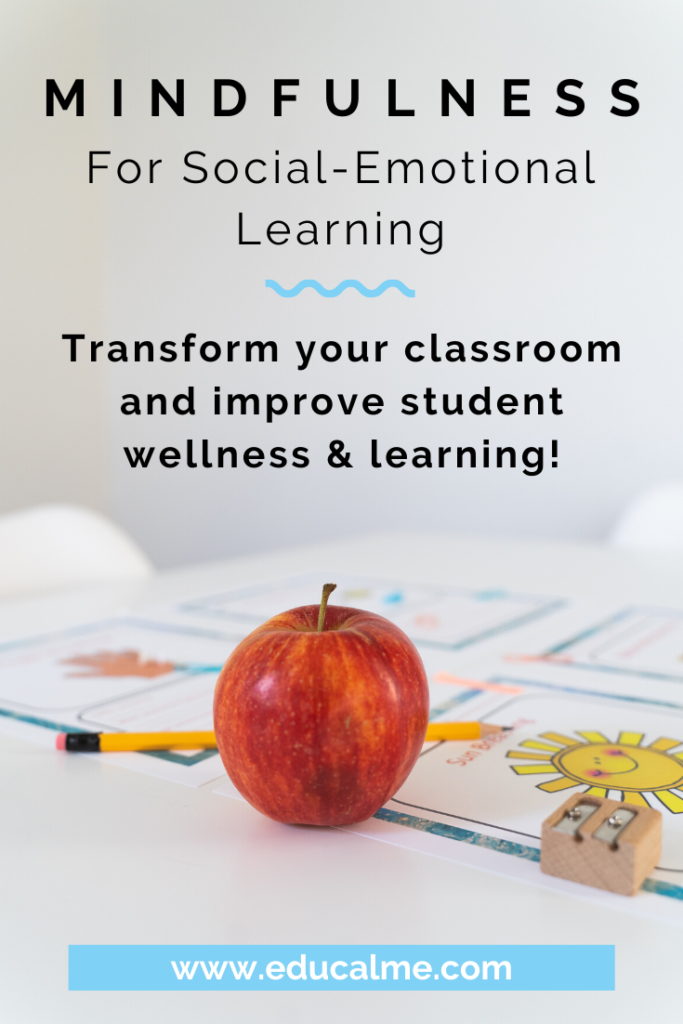Subscribe to the Balanced Educator Podcast so you don’t miss our upcoming episodes: iTunes | Spotify | Google Play
Paper: Greater Mindfulness is Associated With Better Academic Achievement in Middle School
Learn more about Educalme here.

Mindfulness is simply the act of paying attention to the present moment on purpose. It’s a simple concept in theory, but it’s difficult to achieve. It takes time and practice.
To learn to live in the present moment, it’s important we create a dedicated, daily practice. We call this the formal mindfulness meditation practice.
First, find a quiet spot where you can sit without disruptions. Put your phone on airplane mode and the set a timer for 5 minutes. And if 5 minutes seems too long, make it 2! Find a comfortable and alert seated position, and close your eyes.
Focus all of your attention on your breath, notice the feeling of your inhalation and your exhalation.
When you notice that your brain starts thinking of other things (which it will… we call this puppy brain!), without judgement, refocus on your breath. Every time you bring your attention back to your breath you are training your brain to appreciate the simplicity of the present moment.
Just like with any new exercise, this will not be easy in the beginning. But with time and practice, you will see that your concentration on the breath will improve and a sense of calm will follow.
We take 5 minutes a day for ourselves, but we also take 5 minutes a day to do this with our students. Learn exactly how to do this in your classroom successfully here. Keep reading to find out how this simple daily practice changes everything for us in our classrooms!
The more we practice formally, the more we notice the effects of mindfulness meditation and its benefits seep out into our regular lives!

Two research studies came out very recently showing the benefits of a daily mindfulness practice in the classroom.
What we’ve observed in our own classrooms and in over a hundred classrooms using the Educalme Classroom program is very similar to what is shared in this article. Check out our podcast show notes above to read both articles!
As a result of this daily practice,
In the MIT study, not only do they report that students did better with academic achievements, there were less suspensions and absences!
In the 8-week research, they found that students’ brains actually changed physically. Students are also better able to manage stressors because the amygdala response was lowered.
How fascinating is that?!
Both studies stressed the importance of continuing this mindfulness practice. This isn’t something we can do for a little while and reep the benefits in the future. If we want to see its benefits, it has to be an ongoing daily practice. Routine is SO important and repetition is the key to success!
Join the Educalme Free trial! Not only will you learn how to set up the routine successfully, but you will also gain access to a ready-to-use resource! Get ready to thrive in a calm and focused learning atmosphere!


